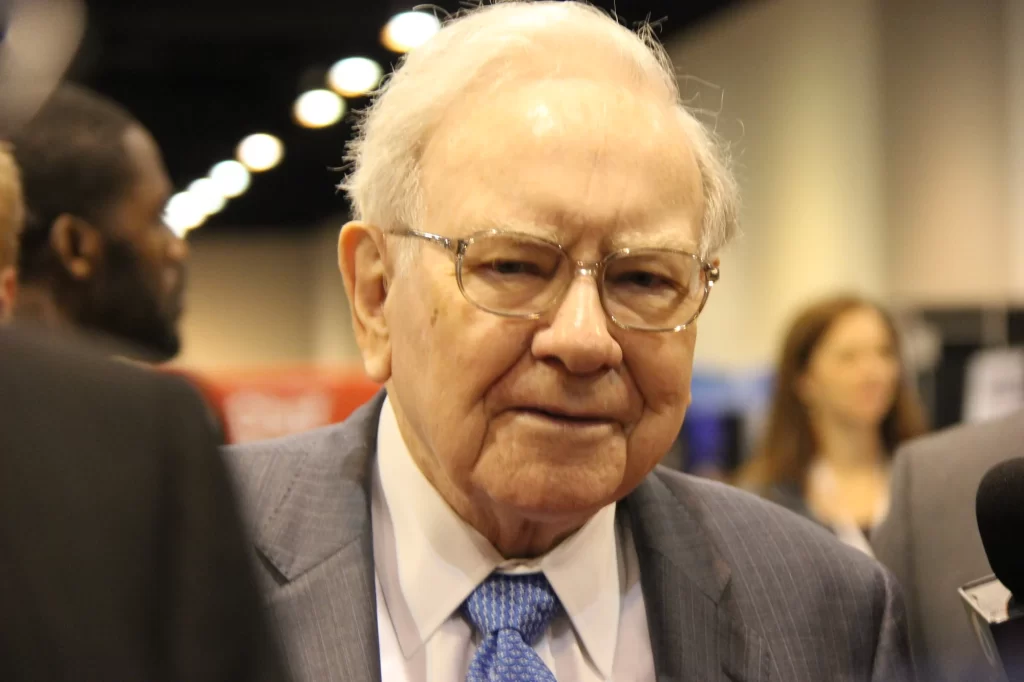The Oracle of Omaha won’t even buy one share of a company if it doesn’t meet this criterion.
Some things just go together. Adele and singing a power ballad. Lebron James and playing basketball. Warren Buffett and investing in stocks.
But while Adele and Lebron regularly do their things, Buffett is content to avoid investing in stocks at times. Sure, the Oracle of Omaha bought 19 stocks for Berkshire Hathaway‘s portfolio in 2022 (that we know of so far, anyway). However, it’s not out of the question that Buffett could buy few, if any, stocks in the new year.
The reason why is that the legendary investor has a very strict criterion he applies before buying even one share of a company. Take Buffett’s advice: Don’t buy any stock in 2023 unless it passes this one critical test.
Buffett’s two steps
Buffett wrote to Berkshire Hathaway shareholders in 2013 that he and his longtime business partner Charlie Munger use basically the same approach in buying stocks that they do in acquiring entire companies. There are two steps to this process:
- Estimate the company’s earnings range for five or more years in the future.
- Buy the stock if it’s available at a reasonable price, relative to the lower end of the estimated earnings range.
There’s an important word that Buffett used with the first step in this process. He wrote that he and Munger had to determine if they could sensibly estimate a company’s earnings.
Anyone could pluck earnings projections out of the air. Buffett, however, would insist that detailed research and careful analysis be performed to estimate earnings.
Note that he specifies that an earnings range be estimated. The multibillionaire knows that it’s impossible to precisely project any business’s future earnings. The best anyone can do is determine a realistic range.
The period of five or more years in the future is also key. Companies might be able to generate strong earnings over the short term but unable to do so over the long term.
Digging deeper
One obvious question about Buffett’s two-step process is: How can an investor estimate a company’s earnings range? The most important prerequisite is that you understand the company’s business well enough to make an educated estimate.
Buffett emphasized this in his 2013 letter, stating, “It’s vital, however, that we recognize the perimeter of our ‘circle of competence’ and stay well inside of it.”
The best place to start estimating future earnings is to look at a company’s financial statements. Look at the current and past earnings to get a baseline. Check out the balance sheet to make sure servicing any debt won’t hamper earnings growth.
Examine industry trends and the competitive landscape. A company that dominates a market that’s growing fast will be more likely to grow its earnings than one with a lot of competition in a stagnant market.
Don’t be reluctant to look at Wall Street analysts’ earnings projections, either. Just remember that the goal is to estimate earnings for at least five years in the future and not just for the next few quarters.
There’s also another question that needs to be addressed: What is a reasonable price, relative to the lower end of the estimated earnings range? This will vary based on the company’s growth. However, the average price-to-earnings estimate of the S&P 500 going back to 1950 is 19.6. A stock that trades well under this level, compared to the low end of its projected earnings, should have a reasonable margin of safety.
Two stocks that pass the Buffett test
Are there any stocks that pass this Buffett test in 2023? I think so.
I’d put Occidental Petroleum (OXY 1.14%) on the list without doing any detailed analysis. Buffett clearly believes that the oil and gas producer is reasonably valued, relative to its future earnings potential because he recently bought a lot of the stock for Berkshire.
If we only look at stocks that Buffett doesn’t own, I think Medical Properties Trust (MPW -0.80%) (MPT) stands out. The healthcare real estate investment trust (REIT) leases properties to hospital operators.
Analysts estimate that it can grow earnings by an average of 6.5% annually over the next five years. I think that’s an attainable estimate, considering that MPT increased its earnings by more than twice that rate over the past five years.
But let’s be more pessimistic and assume that MPT only grows its earnings by 3% annually over the next five years. The stock trades at around 4.6 times this lower projected earnings. That’s an attractive valuation that I think makes MPT worthy of serious consideration, especially with its juicy dividend yield of 10.5% thrown into the mix.
Maybe Occidental and MPT won’t deliver great returns. Buffett himself acknowledged in his 2013 letter that he sometimes makes mistakes. If he does, you and I will, too. However, only buying stocks that pass his critical test should help avoid disastrous mistakes.



























